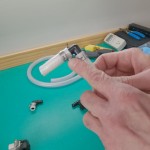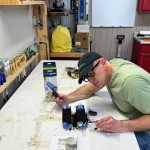This post may contain affiliate links.
Welcome back!
It’s time for the next installment in our “RV Basics” series, where I try to give you the talks I wish I had gotten when we started RVing. These videos are not technical, and are geared towards easing any apprehension for new RVers.
But for this one, I hope the beginners are really paying attention. It’s about one of the biggest sources of anxiety for new RVers – wastewater plumbing – including the black tank!
Our friends at Winnebago sponsored this video, along with all the videos in my “RV Basics” series, so thank you Winnebago! They want to make your transition to RV ownership easy, with you educated on all your RV’s systems and ready to hit the road. Make sure you check out the other videos, too:
RV BASICS SERIES:
➡️ Understanding RV Electrical Systems
➡️ Introduction to Fresh Water Plumbing
➡️ Dry Camping and Boondocking Best Practices
If you have any questions, ask below in the comments and I’ll do my best to answer!











Go composting! You’ll never go back to a blackwater tank again.
We tried it.
We went back.
The Straight Poop on our Composting Toilet
I have a 2023 EKKO and I have found the the sensor that monitors fresh and grey water levels is way out of whack. The fresh water sensor is consistently off by 15%. When the tank is full, that is water is flowing out of the overflow outlets when I fill it, the monitor says that it is 85% full. The grey tank monitor does not register any water until the fresh water monitor is below 50%. Are you and others experiencing similar issues?
Thanks for all the information.
I replaced our tank monitors with the SeeLevel system. We’ve had no false readings since.
Replacing Our RV’s Monitor Panel – With SeeLevel!
Why don’t RV manufactures use gray water for flush water? Of course if there is insufficient gray water then fresh water would be required.
A few reasons. Firstly, grey water is not clean. If you filled your toilet with grey water, you’d find it unpleasant. As in it would smell… bad.
Then, it would need a pump/filters/etc to move it around. There would also be cross-contamination issues if a fixture was equipped to use both fresh and grey water.
That’s a lot of expense and effort involved to conserve a resource that’s basically cost-free for most RVers.